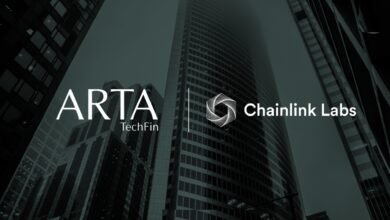
Financial services, supply chain management, healthcare, and other sectors have all benefited from blockchain technology’s meteoric rise from a specialized innovation to an essential pillar of these systems. Core to blockchain technology is the idea of a blockchain ledger, which is a transparent, decentralized, and irreversible database. This essay will explore blockchain ledgers in detail, covering their meaning, important features, and the revolutionary effect they have on the internet space.
What is a Blockchain Ledger?
Data is kept across several nodes (computers) in a network using a blockchain ledger. Which is a kind of distributed ledger technology (DLT). Blockchain ledgers function decentrally, in contrast to conventional databases that are usually overseen by an authoritative body. All nodes in the network have access to the same data, which guarantees openness and security, and no one entity controls the full ledger.
A series of interconnected blocks, or “blocks,” that record transactions make up the blockchain ledger. By connecting these blocks with cryptographic hashes, an immutable record of all network transactions is created. Because blockchain ledgers are decentralized, no one can change or remove recorded data without the agreement of the entire network. This makes the system extremely trustworthy and secure.
Key Features of Blockchain Ledgers
Decentralization
One essential feature of blockchain ledgers is their decentralization. A decentralized network does not rely on a central server or have control over its data. Rather, it is spread out among numerous nodes, each of which stores a complete copy of the ledger. Because there is no longer any one point of failure due to this data dissemination, the system is far more resistant to attacks and failures.
Immutability

Data cannot be easily removed or altered once uploaded to a blockchain ledger. Using cryptographic hashes and consensus procedures, the data becomes immutable because any attempt to alter it would necessitate a tremendous amount of computing power. This means that applications requiring absolute data integrity would benefit greatly from using blockchain ledgers, as they are very trustworthy and secure.
Transparency
Because every node in the network can see the same data, blockchain ledgers are essentially transparent. Participants can independently confirm the data’s accuracy, which promotes confidence. Also, anyone may see the whole history of transactions since blockchain ledgers are often open to the public. Industries like banking, where responsibility and trust are paramount, greatly benefit from this degree of openness.
Security
The use of cryptographic methods in conjunction with consensus algorithms ensures the security of blockchain ledgers, an essential component. An immutable chain is created when each block of the ledger is cryptographically hashed and linked to the one before it. Also, the ledger will only ever contain legitimate transactions because of consensus techniques like Proof of Work (PoW) and Proof of Stake (PoS). The combination of consensus and cryptography renders blockchain ledgers very secure and impervious to fraud.
Efficiency
By replacing manual procedures with automated ones and eliminating middlemen, blockchain ledgers can boost efficiency across many different sectors. By doing away with middlemen like banks, blockchain technology can revolutionize financial transactions, making international money transfers cheaper and faster. The use of blockchain technology in supply chain management has the potential to increase efficiency and decrease delays by providing real-time visibility into the movement of commodities.
Types of Blockchain Ledgers
There are several types of blockchain ledgers, each with its unique characteristics and use cases. The three primary types are:
Public Blockchains
Everyone is welcome to run a node or complete transactions on a public blockchain because it is accessible to everyone. The two most famous public blockchains are Bitcoin and Ethereum. All users have equal access to the data stored in these transparent, decentralized ledgers. Cryptocurrencies and decentralized finance (DeFi) are two examples of vitally transparent and trusting applications that frequently employ public blockchains.
Private Blockchains
Private blockchains are a kind of network that only a select few people can join. Organizations that need more control over their data and participants commonly adopt these ledgers. Due to the lower volume of users and transactions processed by private blockchains, they are often quicker and more efficient than their public counterparts. However because they depend on a single entity to oversee the network, they lack transparency and decentralization.
Consortium Blockchains
A consortium blockchain combines elements of both public and private blockchains in which multiple organizations work together to oversee the network’s operations. The collaborating organizations share control of these partially decentralized ledgers. In fields like supply chain management and banking, where numerous parties must work together and exchange data, consortium blockchains are frequently employed.
Challenges and Limitations of Blockchain Ledgers
Despite their many advantages, blockchain ledgers also face several challenges and limitations that must be addressed for broader adoption:
Scalability
Scalability is a major issue with blockchain ledgers. The time and resources needed to process and validate transactions on a blockchain network are directly proportional to the volume of transactions. Especially on public blockchains with extensive networks, this might cause transaction fees and delays to increase. Although they are still in their early stages of adoption, solutions including sharding, layer-2 protocols, and off-chain transactions are being developed to tackle these scaling difficulties.
Energy Consumption
Particularly blockchain ledgers that employ Proof of Work (PoW) consensus processes can consume a lot of energy. Energy is consumed in massive quantities due to the processing power needed for mining new blocks and validating transactions. Because of this, some are worried about the effects of blockchain technology on the environment, especially about Bitcoin and other cryptocurrencies. To find a more energy-efficient solution, researchers are looking at alternate consensus processes like Proof of Stake (PoS), which comes with its own set of advantages and disadvantages.
Regulatory Uncertainty
Authorities all around the globe are still trying to figure out how to handle blockchain ledgers. Therefore the regulatory environment is always changing. Existing rules aren’t always compatible with blockchain’s decentralized nature, which might cause confusion and possible legal issues. The adoption process might be hindered by the lack of clarity surrounding regulations, especially in sectors like healthcare and finance that are subject to extensive oversight.
Interoperability
An additional issue that must be resolved is the non-interoperability of various blockchain ledgers. Many blockchain networks are now running in silos, which makes it hard for them to exchange data and communicate. The promise of blockchain technology might be hindered and inefficiencies created by its fragmentation. While efforts are underway to establish standards and protocols for interoperability, much remains to be accomplished before several blockchain networks can be seamlessly integrated.
Adoption Barriers
Traditional industries and organizations, in particular, continue to face substantial hurdles to blockchain adoption, despite the technology’s increasing popularity. The complexity of the technology, the requirement for specific knowledge and abilities, and the possibility of upheaval to current business structures are all obstacles. Another barrier to the wider use of blockchain technology. The common notion that it is mostly linked to criminal activity and cryptocurrency.
The Future of Blockchain Ledgers
There is much hope for the future of blockchain ledgers. Which can revolutionize whole industries and alter our relationship with digital technology. The following events and trends are likely to impact blockchain ledgers in the future as the technology evolves:
Increased Adoption in Traditional Industries
We may anticipate a rise in blockchain ledger usage in more conventional sectors like healthcare, supply chain management, and banking as the advantages of these systems are well understood. As a result of blockchain technology’s potential to increase operational efficiency, security, and transparency, new business models and possibilities will emerge in these sectors.
Development of Interoperability Standards
The next generation of blockchain ledgers will prioritize interoperability. Interoperability and data exchange across blockchain networks is going to be crucial. However, as the number of enterprises using blockchain technology grows. The creation of protocols and standards for interoperability will allow various blockchains to communicate with one another, opening up new avenues for cooperation and creativity.
Integration with Emerging Technologies
It is quite probable that blockchain ledgers will be combined with other cutting-edge technologies like quantum computing, the Internet of Things (IoT), and artificial intelligence (AI). Unforeseen use cases and applications may emerge as a result of these integrations. Combining blockchain with AI, for instance, might pave the way for smarter, more autonomous decision-making while merging it with the Internet of Things (IoT) could make all those linked gadgets safer and more efficient.
Regulatory Clarity and Support
Greater regulatory clarity and support for blockchain efforts can be anticipated as governments and regulatory organizations get more familiar with blockchain technology. Among these options are the establishment of regulatory sandboxes to foster experimentation and new ideas. The formulation of rules adapted to the particular features of blockchain ledgers.
Continued Innovation in Consensus Mechanisms
One area where blockchain technology is always evolving is the creation of better consensus mechanisms. Proof of Stake (PoS), Delegated Proof of Stake (DPoS), and Practical Byzantine Fault Tolerance (PBFT) are some of the alternatives that researchers and developers will be looking. The shortcomings of current consensus mechanisms like Proof of Work (PoW) become more obvious. More secure, scalable, and energy-efficient blockchain networks may be possible as a result of these advancements.
In Summary
A revolutionary development in the realm of digital technology, blockchain ledgers provide a secure, decentralized, and transparent way to record and manage data. Blockchain ledgers could transform numerous sectors due to their widespread use in areas. The such as cryptocurrency, healthcare, supply chain management, and more. To reach its maximum potential, blockchain technology must overcome obstacles like scalability, energy consumption, regulatory uncertainty, and interoperability.
Looking ahead, it seems likely that blockchain ledgers will continue to be developed and adopted, which will bring forth new opportunities, innovations, and revolutionary shifts in our digital technology interactions. We can be better prepared for the fascinating possibilities. That await us if we familiarize ourselves with the main characteristics, applications, and difficulties of blockchain ledgers.
[sp_easyaccordion id=”3069″]







